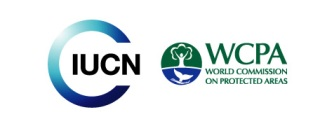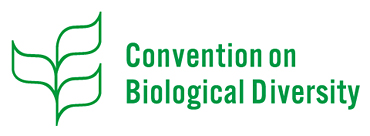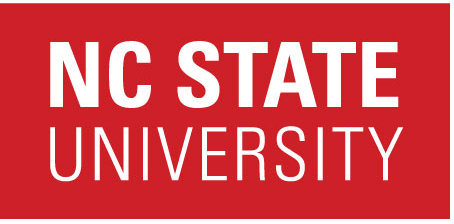Tools for Capacity Building
Chapter Coordinator: Anna Spenceley
Chapter contributors: Anna Spenceley, Stephen McCool, Yu-Fai Leung, Sandra De Urioste-Stone, Susan Snyman, Megan Epler Wood, Mark Milstein, Dani Ndebele, Giulia Garbone, Maria Ana Borges, Chih-Liang Chao, Dau-Jye Lu, Mei-Hui Chen, Erin Seekamp, Lee Cerveny.
Chapter 9 Table of Contents
9.1 Introduction
9.2 Actors and Core Competencies
9.3 Capacity Building for Managers
9.4 Capacity Building for Local Communities: Concepts
- 9.4.1 Spectrum of Community Engagement
- 9.4.2 Social Communication and Consultation with Stakeholders
- 9.4.3 Concepts and Approaches for Community Participation
- 9.4.4 Conflict Management
9.5 Capacity Building for Local COmmunities: Programme Examples
9.6 Capacity Building through Partnership
9.7 Guidelines for Capacity Building
Acknowledgements
References
- Ackoff, R.L. (1996). ‘On Learning and the Systems that Facilitate It’. Center for Quality of Management Journal 5(2):27-35.
- Bonilla, J.C. (1997). Participatory Ecotourism Planning. Conservation International Foundation.
- Borrini-Feyerabend, G., Pimbert, M. P., Farvar, M. T., Kothari, A., and Renard, Y. (2004). Sharing Power: Learning by Doing in Co-management of Natural Resources Throughout the World. Tehran, Iran: IIED AND IUCN/CEESP/CMWG. Online Resource
- Chevalier, J.M., and Buckles, D.J. (2008). SAS2: A Guide to Collaborative Inquiry and Social Engagement. Los Angeles: SAGE Publications & IDRC.
- Cole, D.N. (2004). ‘Wilderness Experiences: What Should We Be Managing For?’. International Journal of Wilderness 10(3):25-27.
- Competencies Working Group. (2002). Competencies: Report Of The Competencies Working Group. Albany, NY: New York State Department of Civil Service.
- Eagles, P.F.J., and McCool, S.F. (2002). Tourism in National Parks and Protected Areas: Planning and Management. Wallingford, UK: CAB International.
- Eagles, P.F.J., McCool, S.F. and Haynes, C. (2002). Sustainable Tourism in Protected Areas: Guidelines for Planning and Management. Gland, Switzerland: IUCN. Online Resource
- Ennis, R.H. (1993). ‘Critical Thinking Assessment’. Theory Into Practice 32(3):179-186.
- Goodwin, H. and Santilli, R. (2009). ‘Community-Based Tourism: A Success?’. ICRT Occasional Paper 11. http://www.haroldgoodwin.info/uploads/CBTaSuccessPubpdf.pdf
- Horton, D., Alexaki, A., Bennet-Lartey, S., Brice, Noele, K., Campilan, D., Carden, F., et al. (2003). Evaluating Capacity Development: Experiences from Research and Development Organizations around the World. The Hague, Netherlands: International Service for National Agricultural Research.
- Hough, J. (2006). ‘Developing Capacity’. In M. Lockwood, G.L. Worboys, and A. Kothari (eds.) (2006). Managing Protected Areas: A Global Guide, pp.81-109. Gland, Switzerland: IUCN, Earthscan.
- Huang, Y.W. (2011). ‘Ecotourism Development and Promotion in Taiwan: Perspective On The Role And Actions Of The State’. Journal of National Park 21(1): 1-22.
- Jager, E., Sheedy, C., Gertsch, F., Phillips, T. and Danchuk, G. (2006). Managing for visitor experiences in Canada’s national heritage places. Parks 16(2):18-24. Online Resource
- Jones, H. (2008). ‘Community-Based Tourism Enterprise in Latin America: Triple Bottom Line Outcomes of 27 Projects’. Burlington, Vermont: EplerWood International.
- Liu, S.G. (2013). ‘Government And Local People Are Not Enemies But Friends, Brilliant Outcomes Of Ecotourism In Pintung’. [Website] http://travel.udn.com/mag/travel/storypage.jsp?f_ART_ID=87332#ixzz2Q23cIK2w. Accessed on March 20, 2013.
- Luo, T., and Lawson, G. (2011). ‘An investigation of unique challenges in national historic relics and scenic sites (NHRSSs) in Chinese research literature 1982–2008 using coword analysis’. Journal of Tourism and Leisure Studies 17(2):293-314.
- Mason, P. (2008). Tourism Impacts, Planning and Management. 2nd ed. Burlington, MA: Elsevier.
- McCool, S., Hsu, Y. C. Rocha, S. B., Sæþórsdóttir, A. D., Gardner, L. and Freimund, W. (2012). Building The Capability To Manage Tourism As Support For The Aichi Target. PARKS, 18(2): 92-106. Online Resource
- McCreary, A., Seekamp, E., Cerveny, L.K., and Carver, A. (2012). Natural Resource Agencies and Their Motivations to Partner: The Public Lands Partnership Model. Leisure Sciences, 34(5): 470-489.
- OECD/DAC. (2006). The Challenge of Capacity Development: Working Towards Good Practice. Paris, France: OECD. Online Resource
- Pitkin, B. (1995). Protected Area Conservation Strategy (PARCS): Training Needs and Opportunities among Protected Area. Washington, D.C.: World Wildlife Fund.
- Rietbergen-McCracken, J. and Narayan, D. (1998). Participation and Social Assessment: Tools and Techniques. International Bank for Reconstruction and Development/ The World Bank. Retrieved May 5, 2013, http://gametlibrary.worldbank.org/FILES/216_Guidelines%20for%20participation%20& %20social%20assessment%20-%20World%20Bank.pdf
- Seekamp, E., Barrow, L. A., & Cerveny, L. K. (2013). The Growing Phenomenon of Partnerships: A Survey of Personnel Perceptions. Journal of Forestry, 111(6), 412-419.
- Seekamp, E., Cerveny, L. K. and McCreary, A. (2011). Institutional, Individual and Socio-cultural Dimensions of Partnerships: A Cultural Domain Analysis of USDA Forest Service Recreation Partners. Environmental Management, 48(3): 615-630.
- Seekamp, E., and Cerveny, L. K. (2010). Examining U.S. Forest Service Recreation Partnerships: Institutional and Relational Interactions. Journal of Park and Recreation Administration, 28(4): 1-15.
- Shih, J. F. (2011). ‘The Government Sector Development of Knowledge Structure Of Community-Based Ecotourism; Take Shirding Community In Kending National Park As An Example’. Master Thesis of Graduate Institute of Adult Education, National Kaohsiung Normal University, Taiwan.
- Snyman, S. (2012). ‘Ecotourism Joint Ventures between the Private Sector and Communities: An Updated Analysis of The Torra Conservancy and Damaraland Camp Partnership, Namibia. Tourism Management Perspectives, 4:127-135.
- Snyman, S. (2013). ‘High-End Ecotourism and Rural Communities In Southern Africa: A Socio-Economic Analysis’. Unpublished Doctoral dissertation. School of Economics, Commerce Facility, University of Cape Town.
- State of Victoria. (2005). Effective Engagement: Building Relationships With Community And Other Stakeholders. Book 1: An Introduction To Engagement. Melbourne, Australia: The Community Engagement Group.
- Strasdas, W., Corcoran, B. and Petermann, T. (2007). ‘Capacity Building For Ecotourism: Training Programmes For Managers Of Protected Areas’. In R. Bushell and P.F.J. Eagles (eds.). Tourism and Protected Areas: Benefits Beyond Boundaries, pp. 150-167. Wallingford, UK: CAB International.
- Stronza, A. (2008). ‘Partnerships For Tourism Development’. In G. Moscardo (ed.) Building Community Capacity For Tourism Development: Conclusions, pp. 101-115. Wallingford, UK: CAB International.
- UNDP. (1998). Capacity Assessment and Development In a Systems and Strategic Management Context. Technical Advisory Paper No. 3. New York: UNDP Management Development and Governance Division Bureau for Development Policy.
- Wigboldus, S., Nell, A., Brouwer, H. and van der Lee, J. (2010). Making Sense of Capacity Development. Wageningen, The Netherlands: Wageningen UR Centre for Development Innovation.
- Wisansing, J. (2008). ‘Towards Community Driven Tourism Planning: A Critical Review Of Theoretical Demands And Practical Issues’. AU-GSB e-Journal, 1(1):47-59. Retrieved May 3, 2013, http://gsbejournal.au.edu/1V/Journal/Towards%20Community%20Driven%20Tourism%20Planning.pdf
Personal communications:
- Pers. comm. Dani Ndebele, Resource Africa, 2013




